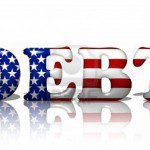Now that the Fed has stopped its quantitative easing who does the Fed expect (hope)  will buy US Treasury debt?
will buy US Treasury debt?
The above introductory comments are edited excerpts from an article* by Chris Hamilton as posted on srsroccoreport.com under the title The Heart Of The Ponzi?!?
Hamilton goes on to say in further edited excerpts:
The 1st chart below shows the four distinct classes of US Treasury buyers showing who purchased and how much in each time period since ’00 cross referencing the blended interest rates on the Treasury curve.
As yields have collapsed and the alternative markets (stocks, RE, corporate or junk bonds) have improved or offered more attractive returns…only the Fed and “Foreigners” have continued to seriously accumulate Treasury’s. (BTW – I included the Fed’s $667 Billion in Operation Twist long bond purchases – paid for from selling all their short paper – to show the power and magnitude of the Fed’s purchases on the Note and Bond “markets” since 2011)…
The next chart shows holdings of Treasury’s…[since] ’00 by each group…Notice the Fed and Foreigners coming to the fore.
The chart below, showing U.S. Treasury purchases by period as a % of total purchases by classification, reveals that the Federal Reserve and Foreigners bought 83% of all US Treasury debt from ’11 – present, double the % they purchased in ’00-‘07. This transfer of responsibility from US Public and Intra-Government buying is unprecedented.
OK, let’s follow CBO assumptions that debt creation will continue at present levels or slightly higher ‘til say, infinity. Who will buy the new and rollover debt?
- Since the yields are too low for most public pensions or insurers or institutional buyers and without a major market downturn; they are not likely to step forward.
- The Intra-Government purchases will be limited by slowing or negative Social Security surplus’ so no buyer there, and…
- the Fed says it will be looking to “normalize” their balance sheet by directly selling or slowly rolling off their holdings.
This leaves only “Foreigners” to maintain the Treasury bid for the vast majority of new issuance plus pick-up the Fed’s “roll-off” while simultaneously maintaining the foreign held $6+ Trillion in Treasury holdings. Ok, got it, “foreigners” have to buy the bulk of all Treasury debt to ensure America feels no pain.
The chart below shows which “Foreigners” have been buying since 2011.
What is noteworthy about the above list is that almost none of them have excess Foreign Exchange Reserves with which to purchase the US Treasury’s.
The chart below notes that those running surpluses are net sellers (UK is typically a false front for Chinese purchasing or selling).
[The chart below shows collapsing yields] since the Fed’s December ’13 taper announcement.
The chart below shows the notable foreign Treasury holding changes since the Fed’s Dec. ’13 taper announcement shows that Belgium and the Cayman Islands became our 3rd and 4th largest creditors…two nations without any foreign exchange reserves in need of recycling while those with reserves and continuing surplus’ (China & Russia) are selling. Curious.
The above would seem to imply that the U.S. has 3 basic options to avoid an interest rate shock on its $17.8 Trillion in debt and more broadly continue its low-interest rates supporting its interest sensitive economy (housing market, stock buybacks, car loans, etc., etc.).
- Belgium, the Cayman Islands, Luxembourg, Ireland, and the like nations continue to “buy” US Treasury’s with dollar reserves they don’t have?!? If nobody has questioned this one so far, maybe they never will?
- The Fed backtracks on its taper and re-initiates the printing presses. Seems Fed has carte blanche to monetize as they see fit?
- Markets collapse making Treasury’s once again the “safety” bid. This seems the likeliest scenario if neither of the two above options are employed to maintain the Treasury market from ’15-’18.
Let’s take a quick look at what the #3 scenario above looks like just to play out the Federal Reserves thinking:
- Let’s assume debt creation continues at current levels.
- Intra-government and Foreigners continues buying at current levels.
- If we take the Federal Reserve and chairperson Janet at their word, the Fed will complete its taper in ‘14 and roll off up to 1/3 ($800 B) of its Treasury holdings over the ’15-’18 period in a process of balance sheet “normalization”.
As can be seen in the chart below, the above leaves the domestic “Public” (pensions, insurers, institutional buyers) in need of increasing their purchases by a factor of 10x or finding an extra $2.2 trillion over their ’11-’14 purchases to make up for the shortfall. Heck, even if the Fed continues to roll all its Treasury holdings, the Public still has to come up with $1.6 trillion over the ’15-‘18 period.
The scenario of Public domestic buyers purchasing massive Treasury holdings would mean equal massive selling of existing assets on hand…i.e., stocks and non-sovereign bonds. Not exactly a pretty picture for financial asset prices which the Fed worked so hard to boost.
Bottom line, the Federal Reserve created false demand for real debt created by the Treasury…and now the Federal Reserve wants to pretend it can step aside for a real buyer somewhere out there for all this debt. Got Gold?
Editor’s Note: The author’s views and conclusions in the above article are unaltered and no personal comments have been included to maintain the integrity of the original post. Furthermore, the views, conclusions and any recommendations offered in this article are not to be construed as an endorsement of such by the editor.
*http://srsroccoreport.com/the-heart-of-the-ponzi/the-heart-of-the-ponzi/ (© 2014 SRSrocco Report. All rights reserved.)
If you liked this article then “Follow the munKNEE” & get each new post via
- Our Newsletter (sample here)
- Twitter (#munknee)
Related Articles:
1. There’s debt, Then There’s Debt, Then There’s U.S. DEBT
The next time someone says, “The US is the richest country on Earth” correct them and state that “The U.S. is the most bankrupt and indebted country in the history of the world” because that’s reality. Let me explain. Read More »
2. Which of These 6 Actions Will U.S. Gov’t Take to Resolve Country’s Debt Problems?
The U.S. is in a financial debt spiral. What’s the Administration to do? This article analyzes 6 alternative courses of action available, presents the consensus view of each, comes to a conclusion as to what will unfold and suggests what the implications are for one’s investment portfolio. Let’s take a look. Read More »
3. Debt Default or Hyperinflation? Which Will It Be?
The Fed, together with other central banks from around the world, have created the perfect crescendo of worldwide credit bubbles and asset bubbles leading to the excesses and decadence which are the normal finale to a secular trend. They have totally destroyed all major world currencies and left the world with debts that cannot and will not be repaid with normal money. As such, there are only two alternative outcomes, debt default or hyperinflation. Both will have disastrous consequences for the world economy. Read More »
4. Why All the Hullabaloo About U.S. Debt?
Is the debt issue phony? It sure sounds like a lot, doesn’t it? $17 trillion in federal government debt. Wow. It’s a big, scary number, no doubt about it, …and it’s a lot bigger than in years past, but is it really that bad? Could it be that our debt profile has been grossly exaggerated? I think so. Let me explain why I think that is the case. Read More »
5. What You Need to Know About the U.S. Budget Deficit & National Debt
Q: Don’t laugh at me, but what is a deficit? A: It’s actually not a dumb question. Here’s why. Read More »
6. Noonan: The Fed Will Never Ever Taper & What That Means For Gold
The Ponzi bubble is bigger than most can imagine. Western central planners… [continue to try to] suppress gold and silver in order to keep their sorry lives alive. In the process, the destruction of people’s financial well- being is unabated… Read More »
7. Economics Can’t Trump Mathematics & the Math Says US In a Debt Death Spiral
The madmen who are responsible for the coming economic disaster continue to behave as if they can manage to avoid it. Violating Einstein’s definition of insanity, they continue to apply the same poison that caused the problem. These fools believe they can manage complexities they do not understand. We are bigger fools for providing them the authority to indulge their hubris and wreak such damage. Read More »
8. U.S. in Terminal Phase of Unprecedented Debt Spiral
Anyone that thinks that the U.S. economy can keep going along like this is absolutely crazy. We are in the terminal phase of an unprecedented debt spiral which has allowed us to live far, far beyond our means for the last several decades. Unfortunately, all debt spirals eventually end, and they usually do so in a very disorderly manner. Read More »
9. Fed’s Tapering Plans Will Be Delayed For These 5 Reasons
The financial markets were in distress lately because of Fed Chairman Ben Bernanke’s suggestion that the Fed might taper off its quantitative easing programs starting at the end of this year and ending in 2015. Here are five reasons why markets shouldn’t worry too much about the Fed leaving the stage: Read More »
10. The Fed Is About to Turn Off the Monetary Spigot! Yeah, Sure
Fearing that the flow of nourishing mother milk from the Fed could dry up, a resolutely unweaned Wall Street threw a hissy fit and the dummy out of the pram last Thursday. The end of QE is seen as the beginning of the end of super-easy policy and potentially the first towards normalization. There is only one problem: it won’t happen. Here’s why. Read More »
11. What Will Happen When the Fed Finally Ends Its Extreme Easing Efforts?
Last Wednesday, Fed Chairman Ben Bernanke promised to end his bond-buying addiction – cold turkey – in mid-2014. That is, as long as the economy is strong enough. As a result, investor fortitude was pushed to the brink. Stocks sold off hard, sending the S&P 500 Index down 1.4%. Before you head for the exits, too, let’s get a little perspective. Read More »
12. Why the End of This Economic Death Spiral Is So Hard to Call
Whether you are an investor, concerned citizen or merely someone trying to understand the current economic situation, you should be worried. Watch this video to get an outstanding overview of what is occurring. It is probably the best short explanation as to why the end of this economic death spiral is so hard to call. Read More »
 munKNEE.com Your Key to Making Money
munKNEE.com Your Key to Making Money












If things get really tough, the Government can always “make” Social Security invest/buy U.S. Treasury Bonds…